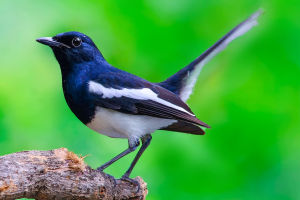In the vast desert, cacti can be considered hardy beings. Even in extreme conditions, these plants can grow and thrive with their sharp spines serving as their defense. In contrast to these spiky plants, camels require a significant amount of energy to sustain their daily hikes.
However, would you believe that camels can eat these spiny cacti directly without fear of harming their mouths? This is an incredible phenomenon.
Camels inhabit a desert environment where water is scarce. They can store large amounts of water and to maintain this water storage, camels must avoid consuming too many plants as most plants do not provide sufficient water for their survival in the desert. As a result, camels seek out plants that contain less water, such as cacti, as a source of food. Although cacti contain relatively more water, the sap in cacti contains essential vitamins and sugars that are highly beneficial for the camel's survival.
Camels have adapted to handle the thorns of cacti. With their wide tongues that can swivel, camels can quickly chew off the spines as they feed on the cacti.
It is worth noting that the thorns in cacti are not intended to deter herbivores like camels but rather serve as a biological defense mechanism against predators. The camel's mouth and stomach are equipped to withstand the stimulation of these spines, so consuming cacti does not harm their health.
In the challenging and unpredictable desert environment, camels need to seize as many opportunities as possible to survive. They have developed the ability to adapt to a variety of food sources, enabling them to maintain adequate nutrition in their bodies. This adaptability has contributed to their success as one of the most resilient mammals in desert and wilderness areas.
Throughout human history, finding food has been a paramount task. Early humans had to rely on simple foods such as wild fruits, vegetables, and animal flesh to survive in harsh environments with limited food resources. However, through brave and intelligent efforts to explore, humans accidentally discovered the cactus plant in the desert, significantly advancing their technological capabilities.
According to legend, a thousand years ago, two traders discovered the edible value of cacti by observing their camels. While traveling in the desert and facing water scarcity, they noticed that a camel consumed cacti and regained its energy and strength. Inspired by this observation, they decided to try consuming cactus themselves and were pleasantly surprised by its delightful taste, crunchiness, and abundance of vitamins and nutrients. This serendipitous discovery revolutionized the way humans find food in the desert.
It is important to highlight the characteristics of cacti: they grow in the desert and feature narrow, flattened leaves covered with needle-like spines, making them unsuitable for direct consumption. However, when necessary, humans can roast, boil, or stew cacti, removing the poisonous spines and liquid to make it a delicious food source. People in the desert often incorporate roasted or cooked cactus leaves into their meals to obtain essential nutrients.
Beyond its palatability, cactus also possesses notable medicinal value. Modern pharmacological studies have demonstrated its glucose-lowering, anti-cancer, and blood pressure-reducing properties. These effects have led to the inclusion of cactus as an important ingredient in modern anti-cancer drugs, making it widely utilized in the medical field.
When we witness these remarkable natural phenomena, we cannot help but feel a sense of awe and wonder. Simultaneously, they reignite our curiosity and desire to explore seemingly dangerous or seemingly insignificant creatures in the natural world. Perhaps, there are still numerous things we have yet to comprehend and discover. What are your thoughts?


